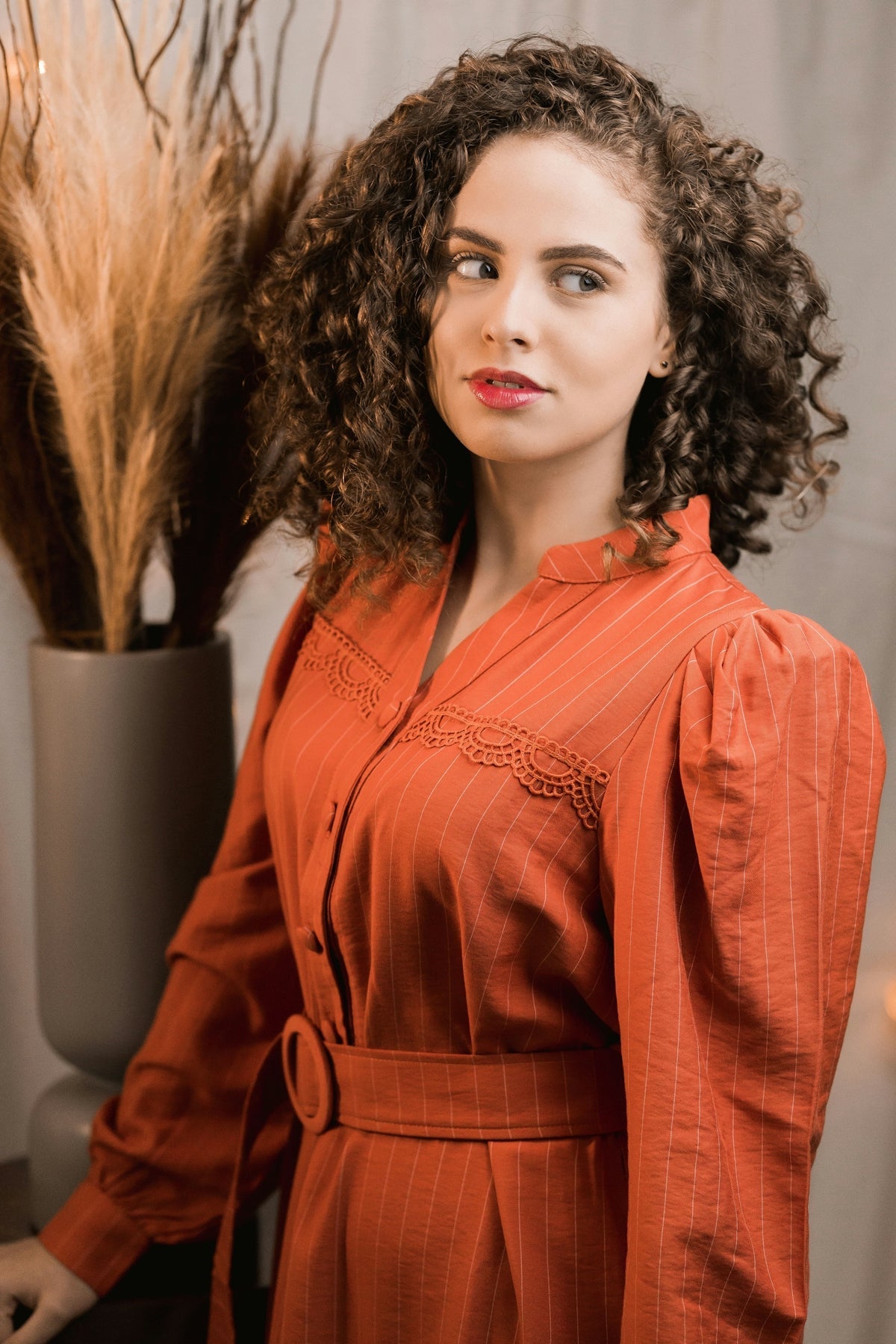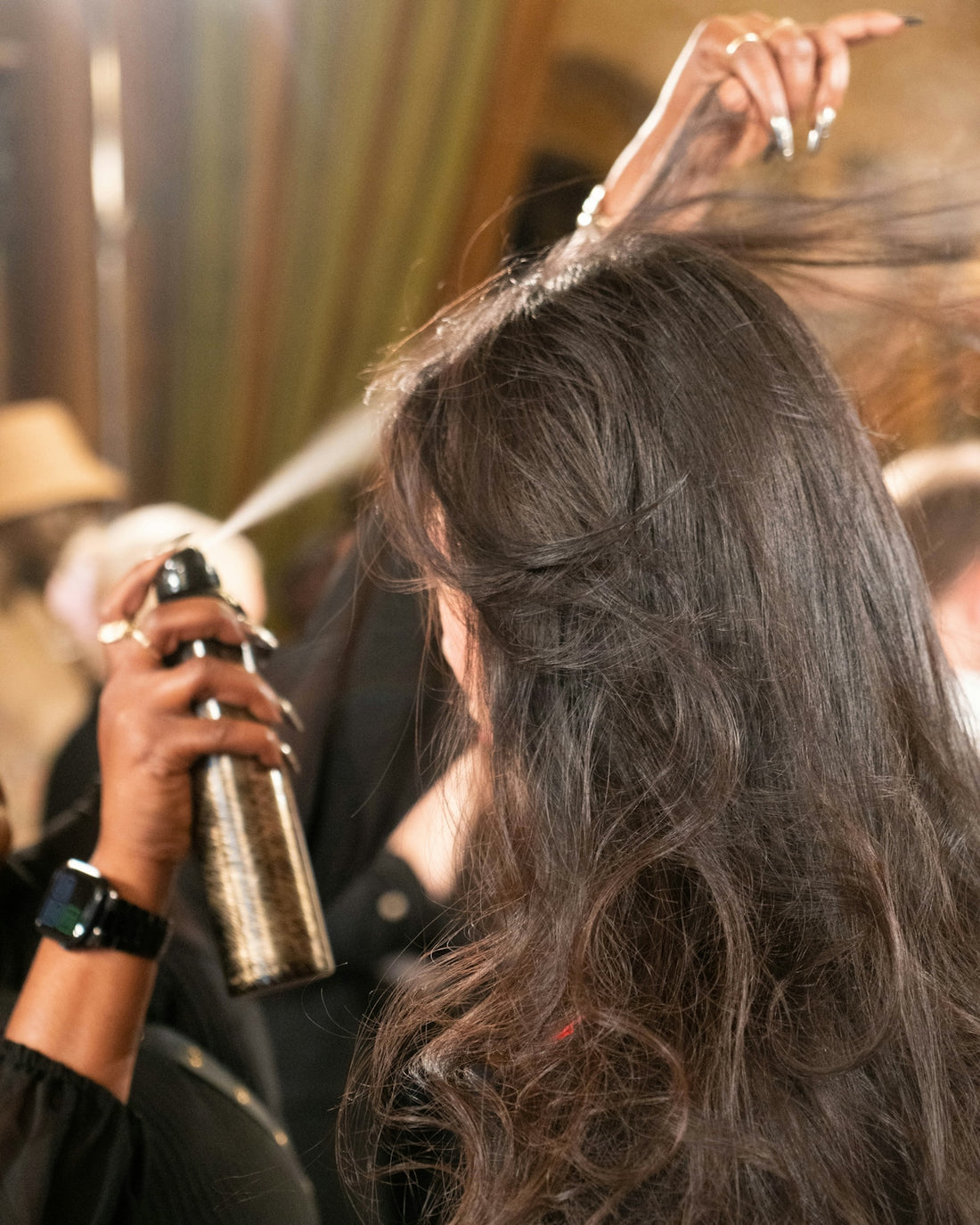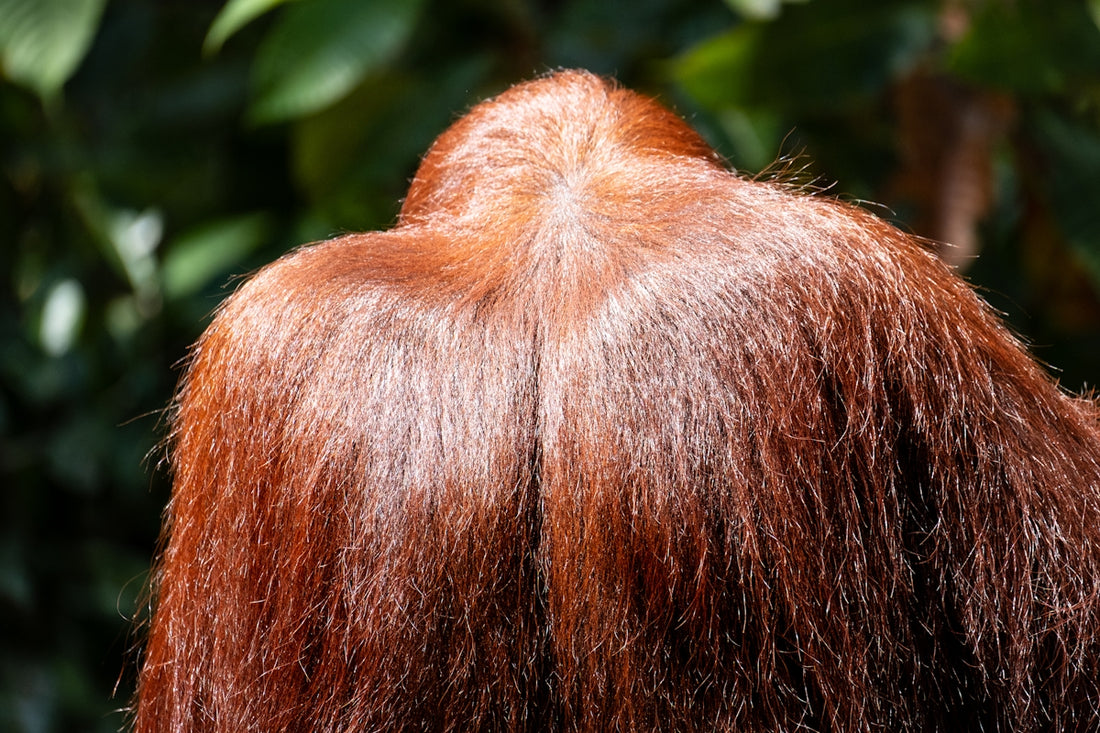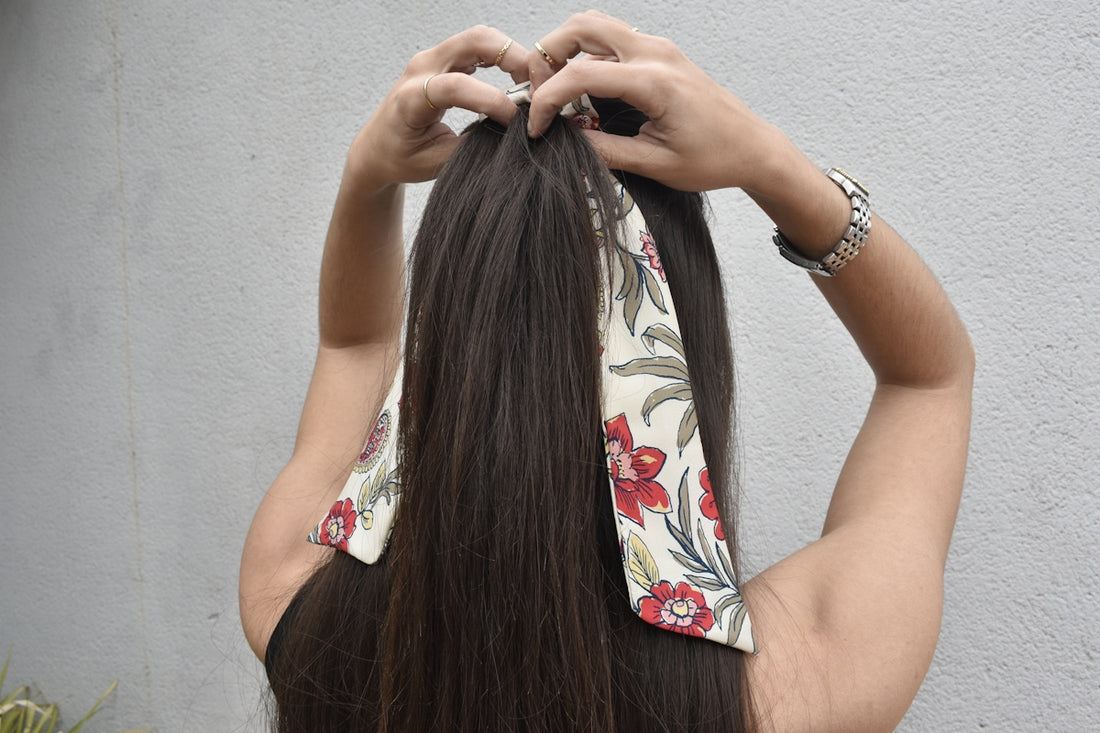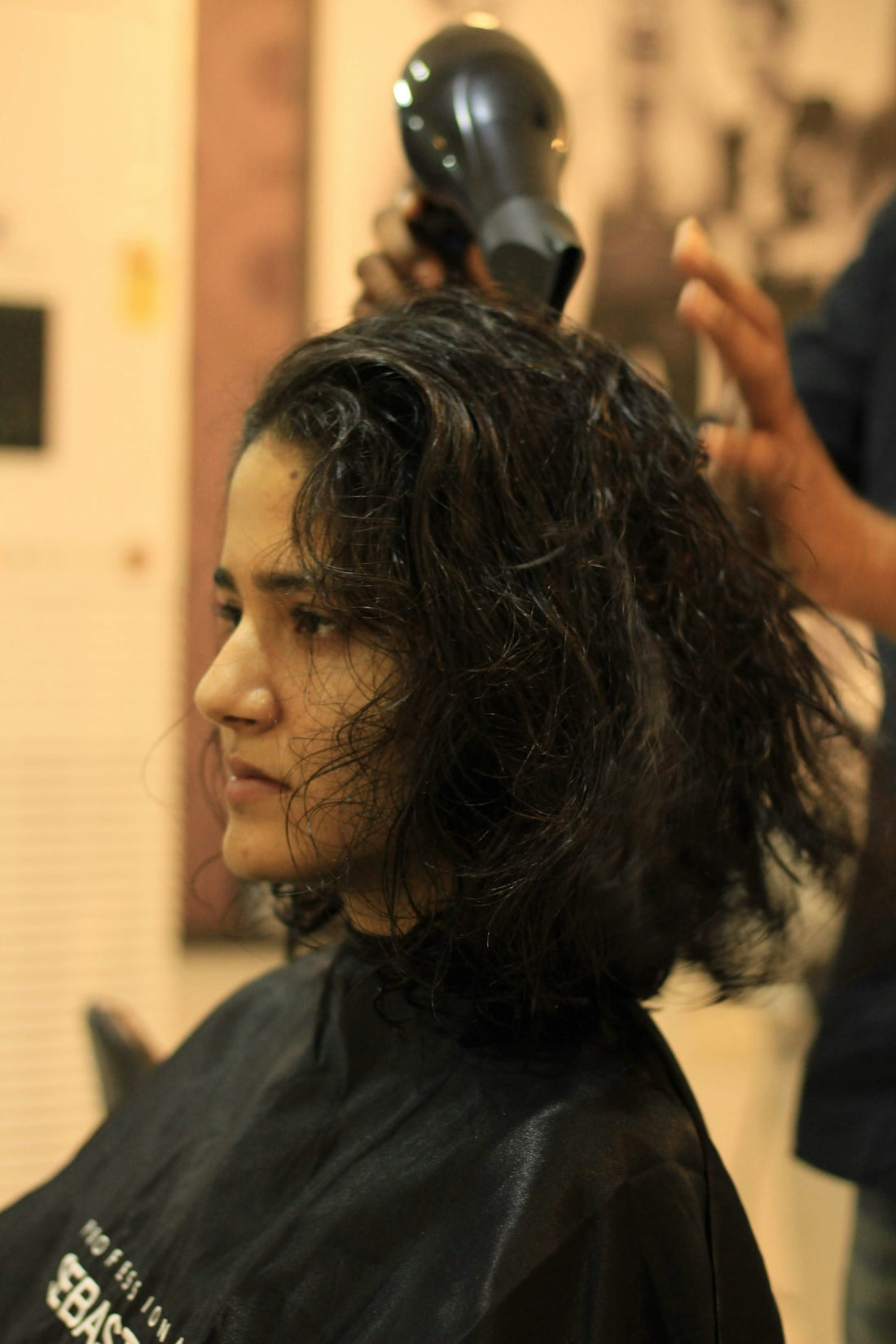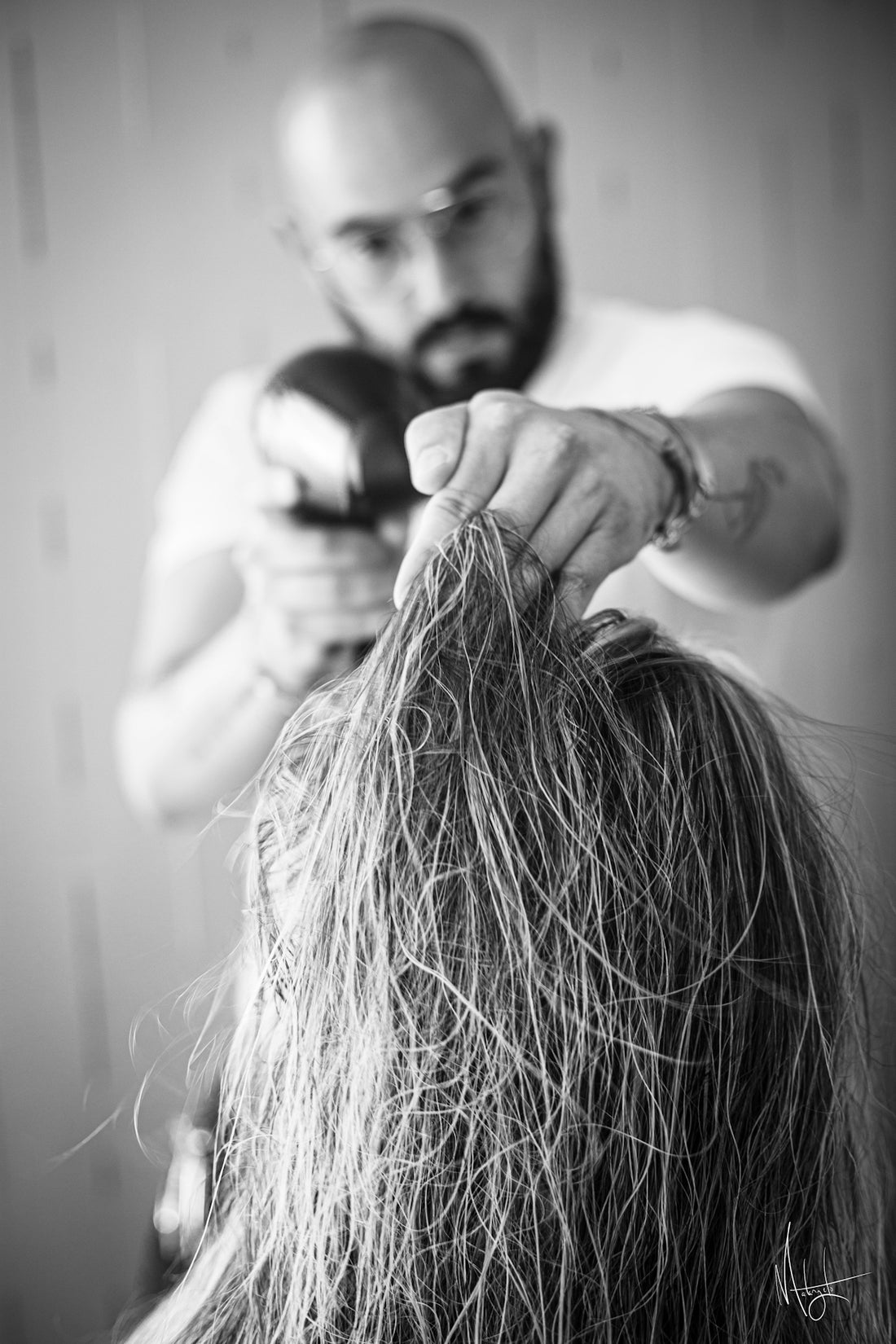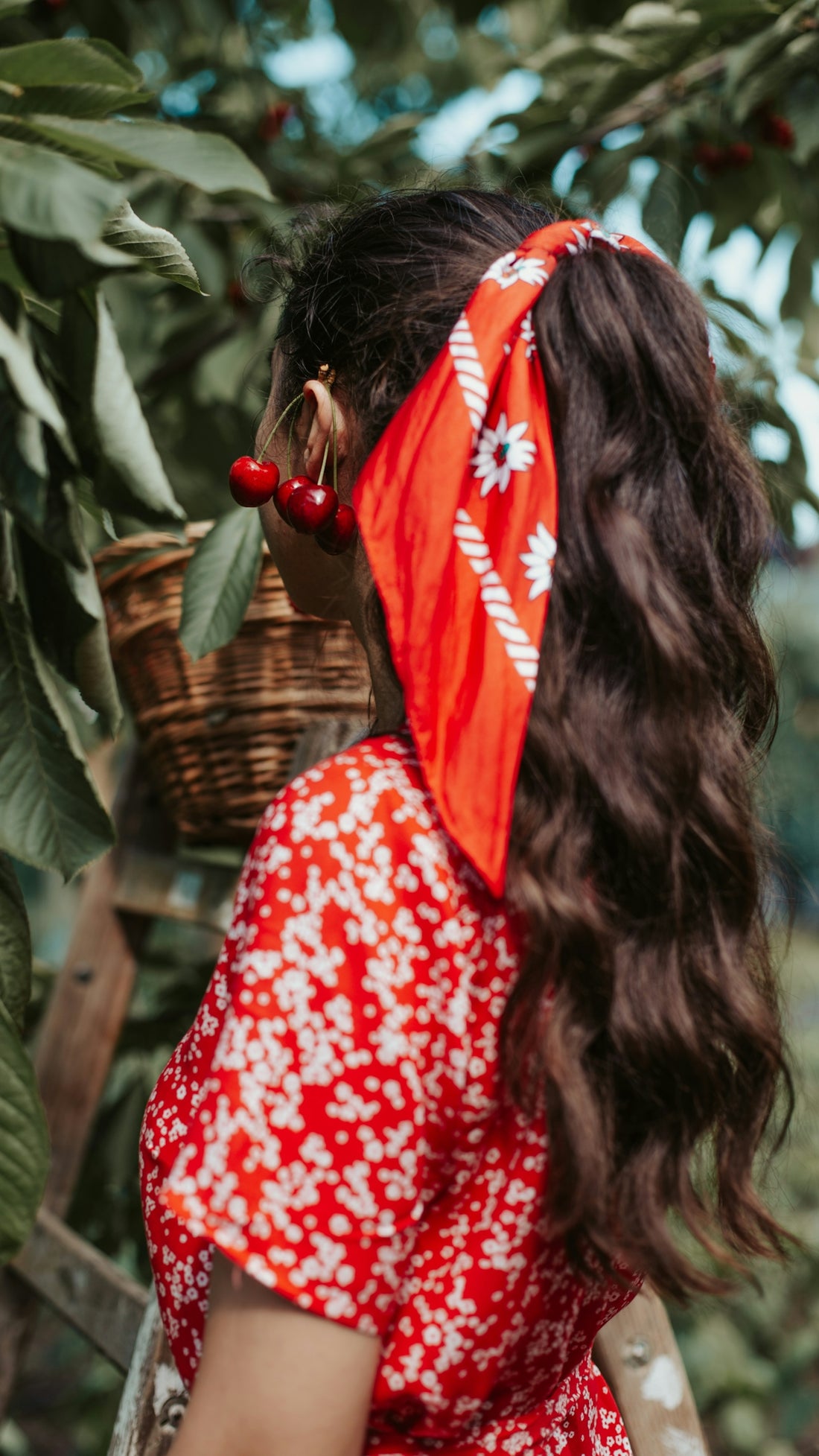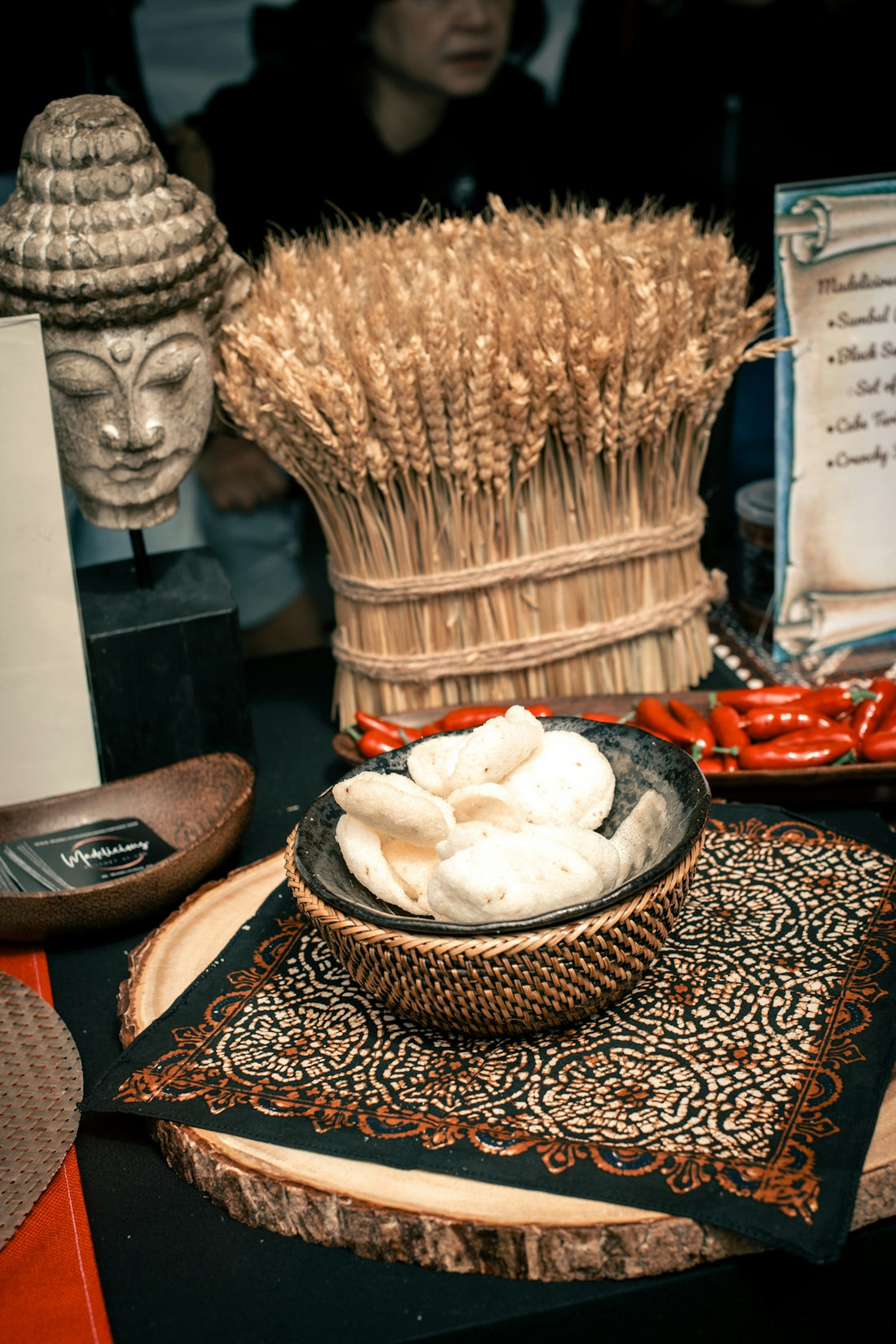News
Ideal composition of a natural shampoo for curly hair
Curly, kinky, wavy, or fine hair requires special care to reveal its natural beauty and shine. Turning to natural products tailored to the specific needs of these hair types can transform your hair care routine and deeply nourish your curls. Why choose a natural shampoo for curly hair? In the quest for the ideal hair product, a natural shampoo stands out for its gentle and gentle effectiveness. The benefits of natural ingredients like green tea extract, collagen, and local Moroccan products, such as marshmallow roots, are often highlighted. These ingredients are not only beneficial for the health of your hair, but they also honor the Moroccan beauty tradition, rich in history and expertise. The benefits of natural ingredients Marshmallow Roots : Known for their soothing properties, they help detangle hair and prevent breakage, making frizzy hair more manageable. Green caviar : Combined with collagen, it provides a dose of essential proteins and amino acids to strengthen the hair fiber, ideal for natural protein care . Green tea extract : Rich in antioxidants, it protects the scalp and stimulates hair growth. Hibiscus : Often used in Moroccan hair care, it brings hydration and vigor to curly hair. Provitamin B5 : Known for its moisturizing properties, it brings shine and softness to your locks. Hair routine for perfect curls Adopting a balanced routine with quality products is the key to healthy, bouncy curls. Here are some essential steps: 1. Shampoo and Conditioner Use a natural caffeine shampoo to stimulate and energize your hair during washing. Follow it with the Ceramide Detangling Conditioner to gently nourish and detangle your hair without weighing it down. Discover the Natural Shampoo and Detangling Conditioner. 2. Leave-In and Masks For a deep treatment, apply the Collagen and Green Caviar Leave-In , which seals in moisture and protects hair from humidity. Protein hair masks strengthen the structure of fine or damaged hair. Try the Collagen Leave-In and Hair Mask. 3. Styling with Gel To define your curls without weighing them down, opt for Aloe Vera Styling Gel , a natural option for maintaining your styles. Aloe vera, with its moisturizing and restorative properties, guarantees flexible hold and redefined curls. Explore Styling Gel. Childcare tips Children's curly hair requires gentle, tailored care. Prioritize natural products to avoid irritation to children's delicate scalps. Incorporate light oil baths and specific treatments to maintain the elasticity and softness of their curls. A tribute to Moroccan traditions Incorporating elements of Moroccan tradition, such as the use of native plants and ingredients derived from the sea or plants, is a time-honored practice for natural hair care. The products available on Naturiam.ma combine tradition and innovation to offer a range of care products that respect both the environment and hair. By adopting these practices and products, not only are you choosing effective hair care, but you're also embracing a natural lifestyle that values Moroccan cultural heritage. Rediscover the pleasure of healthy, radiant hair, every day.
Learn moreHow to Use Natural Styling Gel to Tame Your Curls Naturally
Curly, kinky, and wavy hair is wonderful and unique, but maintaining it can present some challenges. Whether you have curly hair or are looking for tips for your little ones with adorable curls, we guide you on how to use styling gel to achieve spectacular curls. By using natural products designed to respect the raw beauty of your hair, you can achieve a sleek and natural look. Discover tips and tricks that showcase the richness of natural ingredients and the art of hair care in harmony with Moroccan culture. Understanding the nature of your curls First and foremost, it's essential to understand your curl type. Whether it's wavy, curly, or kinky, each hair type has different needs. Thanks to the natural products offered by Naturiam, which are specifically created for textured hair in Morocco, you can better meet these needs. Frizzy hair, for example, requires intense hydration. For finer hair, lightweight products that won't weigh it down are best. Every hair type can benefit from the rich heritage of Moroccan hair care, using ingredients such as green tea extract and hibiscus to nourish your strands. Why choose natural products for your curls Choosing natural hair products is crucial for healthy curl maintenance. Natural active ingredients like green tea, marshmallow, and collagen are known for their beneficial effects on hair health. Not only do they strengthen your hair, but they also make it shinier and more supple. Our Naturiam products feature sulfate- and paraben-free formulas, ensuring you get the best from nature. The Protein Hair Mask is an example of an intensive treatment that uses natural proteins to strengthen your hair. This treatment is ideal after a gentle wash with a Wash Duo suitable for dry hair. How to Use Hair Gel: Step by Step 1. Prepare your hair Start with a gentle wash using a natural shampoo suited to your curl type. Frizzy and wavy hair will benefit greatly from a wash with our Dry Hair Wash Duo, which cleanses without stripping. After shampooing, use an appropriate conditioner . For little ones, our Kids Conditioner makes detangling easy without tears. 2. Apply a suitable leave-in Applying a leave-in to damp hair is crucial for sealing in moisture. Kids' Leave-in is gentle and specifically designed for the needs of young, delicate hair, but is also suitable for adults who prefer a lightweight formula. 3. Style with styling gel Next, apply a natural styling gel such as Marshmallow Jelly. This product harnesses the properties of marshmallow root to define curls without stiffening them. The gel's lightweight texture is ideal for fine hair and provides long-lasting control. 4. Dry hair gently Air-dry or use a diffuser to maintain curl definition and frizz-free curls. Avoid excessive heat, which can damage your hair. Managing Children's Curly Hair Managing children's curls can be a breeze with the right products. Focus on simple, effective routines that incorporate gentle, natural products designed for children's delicate hair. Don't forget to use a children's conditioner and then a suitable leave-in . Natural ingredients: a Moroccan treasure The natural ingredients used in the preparation of Naturiam products are also a legacy of Moroccan culture. For example, the moisturizing properties of provitamin B5 or the soothing effects of hibiscus are often highlighted in our Moroccan hair products. Conclusion Adopting a natural hair routine to tame your curls is an act of care and love for your hair. By incorporating Naturiam products made with natural ingredients, you're honoring Moroccan tradition while directing your hair toward a healthier future. To discover the full range of natural hair products designed to tame your now-tamed curls, visit our site. Don't wait any longer to enhance your curls with nature and Moroccan tradition!
Learn moreChoosing the Best Conditioner for Healthy Curly Hair
Caring for curly, wavy, or kinky hair requires special attention and the right products. Whether you have kinky, wavy, or tight curls, finding the right conditioner is essential for maintaining healthy, vibrant curls. This guide will help you choose the best conditioner for your curls while respecting your hair's natural balance and highlighting the richness of Moroccan natural ingredients. Why Curly Hair Needs Special Attention Curly hair is characterized by its unique texture, which tends to be drier than straight hair. This is due to the shape of the curl, which makes it more difficult for the scalp's natural oils to distribute. Therefore, it is crucial to use a nourishing and moisturizing conditioner to maintain the elasticity and vitality of your curls. The Benefits of Natural Moroccan Ingredients Marshmallow Root Marshmallow root is known for its moisturizing and softening properties. It envelops the hair in a protective layer that helps retain moisture while adding softness. This miracle plant is a must-have for taming frizz. Green Caviar Green caviar, or "green seaweed," is rich in amino acids and essential minerals. It helps strengthen hair structure and give curls a full, healthy appearance. It's a key ingredient for those looking for natural protein care. Green Tea Extract Rich in antioxidants, green tea extract helps revitalize the scalp and stimulate hair growth. It also acts as a protector against environmental aggressors. Hibiscus Used for centuries in Morocco for its restorative properties, hibiscus promotes healthy hair while adding shine and vitality to curls. It is particularly beneficial for curly hair. Provitamin B5 and Salicylic Acid Provitamin B5 penetrates deep into the hair to increase moisture retention, while salicylic acid gently exfoliates the scalp, promoting a healthy environment for hair growth. Naturiam Products for Healthy Curls Leave-In with Collagen and Green Caviar The Collagen and Green Caviar Leave-In is perfect for nourishing and hydrating curls while providing protection against heat and pollution. It's ideal for those looking for a leave-in product for continuous hydration. Collagen Shampoo Collagen Shampoo provides the perfect foundation for your hair care routine. Enriched with collagen, it helps strengthen fine hair and add body and fullness to your curls. Kids Curly Hair Kit The Kids Curly Hair Kit is specially formulated for little ones with delicate hair. This kit uses gentle ingredients to help safely detangle and moisturize your children's curls. Styling Duos For optimal control and defined style, the Styling Duo is the ideal solution. Combining a revitalizing conditioner and a styling gel, it helps define curls while providing long-lasting hold. Tips for an Effective Skincare Routine Choose natural shampoos : Use sulfate-free shampoos to avoid over-drying your hair. Collagen shampoo is an excellent choice. Deeply moisturize : Apply a conditioner rich in natural Moroccan ingredients to keep your hair soft and manageable. Use a detangling leave-in : For all-day hydration, a product like the Collagen and Green Caviar Leave-In is essential. Adopt a child-friendly routine : With specially formulated products, like the children's kit, you ensure the best possible care for their curls. Style with styling gel : For a perfect finish, use a suitable styling gel to maintain curl definition. Conclusion Caring for your curly hair doesn't have to be a daunting task. By choosing the right products, especially those from the Naturiam range, and following a proper care routine, you can enjoy healthy, radiant curls. Don't hesitate to explore the treasures of Moroccan nature to nourish your hair with their unparalleled benefits. To discover our entire range and give your hair the treatment it deserves, visit our Naturiam website. By adopting these tips and products, your curls will be well-maintained, nourished and ready to shine under the Moroccan sun!
Learn moreNatural Protein Treatment Guide for Wavy Hair
Welcome to our ultimate guide to natural protein hair care for wavy hair. If you have wavy, curly, or kinky hair, you already know that caring for it requires special attention. Whether you want to strengthen your natural curls or nourish your fine hair, this guide is for you. Let's embark together on a journey into the world of natural hair care, infused with the richness of Moroccan traditions and beneficial ingredients. Why choose a protein treatment? Wavy and curly hair can often lack protein, making it fragile and prone to breakage. Protein treatments strengthen the hair fiber, provide elasticity, and promote optimal hydration. Incorporating protein into your hair care routine ensures your hair's strength and vitality. The benefits of natural ingredients Our products contain carefully selected natural ingredients to provide your hair with superior care. Here are some of the treasures you'll find in Naturiam products: Marshmallow Root : Valued for its detangling and moisturizing properties, use our lightweight Marshmallow Leave-in for soft, tangle-free hair. Green Caviar and Collagen : Rich in antioxidants and proteins, they help strengthen hair while providing natural shine and suppleness. Discover our Collagen and Green Caviar Leave-in. Green tea and hibiscus extract : Known for their antioxidant and protective properties, these ingredients help protect your hair from external aggressions. How to integrate protein treatment into your routine? A well-designed hair care routine starts with choosing the right products. Here's how you can incorporate Naturiam products into your routine: 1. Wash gently Washing is essential, but choosing a gentle, non-drying shampoo is crucial. For younger children with curly hair, opt for our Kids Shampoo, specially formulated for childlike curls. 2. Condition and detangle After shampooing, apply a conditioner to help soften and detangle your hair. The Ceramide Detangling Conditioner will strengthen your hair fiber while providing pain-free detangling, perfect for frizzy and wavy hair. Discover the product here. 3. Hydrate and protect Using a leave-in is ideal for moisturizing your hair throughout the day. Whether you have wavy, curly, or kinky hair, leave-ins help lock in moisture. We recommend trying our Marshmallow Light Leave-In for a light and nourishing texture. 4. Weekly hair mask For deep conditioning, use a hydrating mask like the Hydrating Hair Mask. This weekly ritual will intensely nourish your hair, leaving it silky and strong. Pieces of Moroccan culture Moroccan hair care traditions have always emphasized the use of natural ingredients. From rhassoul clay to argan to green tea infusions, each of these compositions plays a key role in maintaining hair health. Naturiam draws its inspiration from this spirit, blending tradition and innovation. Benefits not only for your hair, but also for the world Choosing Naturiam means choosing environmentally friendly products designed with a passion for hair health. By choosing our products, you also support the preservation of traditional Moroccan methods, keeping precious artisanal know-how alive. To further explore our range of natural hair products and embrace the positive energy of Moroccan hair care, visit our Naturiam website. Thank you for joining us on this quest for hair that radiates health and vitality. Take care of your curls, because they are as unique as you are.
Learn moreNatural routine to enhance frizzy hair with protein treatment
Frizzy, wavy, and curly hair requires special attention to reveal its natural splendor. In this article, we offer a complete routine with natural protein treatments to enhance your hair. Discover how to incorporate natural and effective products into your daily hair routine. Our journey begins with an exploration of the benefits of ingredients from the richness of Morocco, which are at the heart of Naturiam products. The importance of a natural hair routine Adopting a natural hair care routine is essential for maintaining the health and beauty of your curly hair. Unlike conventional products, a natural shampoo respects the hair fiber without damaging it. The gentle formula cleanses the scalp without disrupting its natural lipid balance. Why choose natural protein care? Protein treatments play a key role in rebuilding and strengthening the hair fiber. They provide the nutrients needed to lock in moisture and protect hair from external aggressions. A natural protein treatment, like Naturiam's, is formulated without harsh sulfates or heavy silicones to provide deep conditioning, ideal for frizzy and color-treated hair. Discover our Natural Protein Treatment. The steps of a hair routine for frizzy hair 1. Natural shampoo: the basis of the routine Cleansing is the first step in maintaining your curls. Use a natural shampoo enriched with gentle ingredients such as green tea extract or hibiscus. These ingredients help purify the scalp while adding natural vitality to the hair. 2. Detangling conditioner After shampooing, it's essential to use a conditioner to effortlessly soften and detangle your hair. Our Ceramide Detangling Conditioner strengthens hair by strengthening the cohesion between the cuticles. 3. Leave-in treatment to nourish and hydrate Nourish your hair with a leave-in treatment that restores elasticity and minimizes breakage. Our curly hair leave-in is enriched with moisturizing ingredients like pro-vitamin B5 and marshmallow root, known for their softening properties. 4. Style with a natural styling gel To define and maintain your curls, opt for an aloe vera-based styling gel . This gel nourishes hair and promotes growth while allowing you to style your hair however you like. Aloe vera styling gel ensures perfect hold without sticky residue. 5. Special care for children Children's curly hair requires special care. Use a suitable kit, such as the Kids' Curly Hair Kit, which offers gentle, tailored care to care for your little ones' hair without the hassle. The benefits of natural ingredients Collagen and Green Caviar Collagen strengthens hair structure, while green caviar , rich in antioxidants and minerals, gently stimulates hair growth. Hibiscus and green tea Hibiscus helps thicken hair deep down, and green tea helps soothe scalp irritation. Moroccan know-how at the heart of our products Rooted in tradition, Naturiam draws inspiration from Morocco's rich botanical heritage. Our natural ingredients are chosen for their proven effectiveness and purity. By incorporating our products into your routine, you benefit not only from high-quality skincare but also from respect for ancestral traditions. In conclusion, a well-thought-out hair care routine is the key to healthy, vibrant hair. Trust the power of Naturiam's natural ingredients to beautify your hair. To learn more, explore our products on Naturiam. Beautify your everyday life with Naturiam, and give your frizzy, wavy and curly hair the care it deserves!
Learn moreBenefits of Natural Shampoo for Fine and Curly Hair
Fine, curly hair requires special care to reveal its full shine and natural beauty. Using the right natural shampoo is essential to maintaining the health and vitality of your hair. In this article, we'll explore the benefits of a natural shampoo for fine, curly hair and how Naturiam products can transform your hair care routine. Why choose a natural shampoo? The synthetic ingredients in many commercial shampoos can cause more damage than benefit to your hair, especially fine and curly hair. These hair types are often more delicate and prone to breakage. Switching to a natural shampoo can help minimize these problems while effectively nourishing your hair. Benefits for all types of curls Whether you have wavy or kinky hair, proper care starts with a good shampoo. Naturiam's natural shampoos, enriched with ingredients like green tea extract, marshmallow root, and salicylic acid, help gently cleanse while respecting your hair's natural texture. These ingredients provide hydration and combat the dryness often experienced by those with curly hair. Powerful natural ingredients The use of natural ingredients is a deep-rooted tradition in Morocco, and Naturiam products are the perfect example. Marshmallow root Marshmallow root is known for adding beautiful softness to hair while making it easier to detangle. It's ideal for fine hair that tends to tangle easily, providing a natural glide without weighing it down. Green Tea Extract Green tea extract is a powerful antioxidant that revitalizes the scalp and stimulates hair growth. It is particularly beneficial for strengthening wavy and curly hair and giving it a natural shine. Hibiscus and Provitamin B5 Hibiscus, combined with provitamin B5, works to deeply hydrate and improve the resilience of frizzy hair, which is often prone to breakage. These ingredients also promote shine and elasticity, making it perfect for all curl types. Children's hair routine Children's curly hair requires gentle, special care. Naturiam's Kids Leave-in is formulated to complement natural shampoo, providing nourishing care that keeps little ones' curls moisturized and defined throughout the day. How to integrate natural protein care? To maximize the benefits, incorporate a natural protein treatment into your routine. This will help strengthen the fragile structure of fine hair and prevent breakage. Combine it with a suitable conditioner, such as the Curly Hair Leave-in, specially designed for mature curls. Hairdressing tips To style your curls after washing, use a styling gel made with natural ingredients that will define and hold your curls without looking stiff. Given the delicate nature of fine hair, it particularly benefits from a gentle, natural approach to styling. An essential tool: The Flexi Brush To facilitate detangling while minimizing breakage, the Flexi Brush is a must-have accessory. Specially designed to enhance your hair care routine, it helps preserve curl integrity by reducing tangles. Travel with peace of mind with Naturiam For those who travel frequently, the 100ml Hair Travel Pack – Complete Personalized Routine in Cabin Size allows you to maintain your natural routine even on the go. It contains everything you need to take care of your curly hair wherever you are. Conclusion Adopting a hair care routine based on natural products is an effective and beneficial way to care for your fine, curly hair. Natural ingredients like those found in Naturiam products not only enhance the appearance of your curls but also promote long-lasting hair health. Embrace the beauty of curly hair with natural, Moroccan solutions. To find out more about the products mentioned, visit Naturiam.
Learn moreLeave-in secrets for shiny, hydrated curls
Curly, wavy, or kinky hair requires special attention to stay radiant and well-hydrated. Leave-in treatment is proving to be an essential ally in this quest for perfect curls. But how do you use it effectively, and what secrets does it hold to beautify your hair every day? Let's dive into the fascinating world of natural hair care. Why Use a Leave-in? Leave-in conditioner is a treatment that stands out for its ability to deeply moisturize, soften hair, and define curls. Unlike a traditional conditioner, it stays on the hair and continues to provide all the benefits of the active ingredients throughout the day. Bring Hydration to Your Curls Curly and kinky hair tends to be drier than other hair types. A well-formulated leave-in treatment with natural ingredients like provitamin B5 or green tea extract hydrates the hair fiber and controls frizz. This treatment can be combined with an aloe vera styling gel for maximum curl definition. The Richness of Natural Ingredients Natural hair care products, such as those offered by Naturiam, are formulated with luxurious ingredients inspired by Moroccan traditions. Hibiscus and Marshmallow Roots for Softness Hibiscus and marshmallow roots aren't just nature's treasures; they're known for adding softness and shine to hair. Incorporated into a natural shampoo , these ingredients nourish your curls from the inside out, making them easier to style. Protein Treatment for Shiny Hair In addition to hydration, hair, especially kinky and curly hair, sometimes needs protein to strengthen its structure. A natural protein treatment can help restore hair elasticity. Alternating with a mask for brittle hair will add strength and vitality to each strand. Adapting your products to your hair type It's essential to choose your products based on your hair texture. Fine hair will appreciate a lightweight leave-in that won't weigh down the fiber, while children's curly hair will benefit from a gentle, hypoallergenic formula. Styling Duos for All Curls The Styling Duos range offers perfect combinations to enhance every type of curl. Whether you have wavy, curly, or frizzy hair, these duos offer a tailor-made solution. Application Tips Apply Leave-in Correctly Prepare your hair : After using a clarifying shampoo, apply the leave-in generously to still-damp hair to seal in moisture. Define Curls : Use your fingers or a wide-tooth comb to distribute the product evenly and shape your curls. Finish with a Styling Gel : For a flawless hold, combine the leave-in with a styling gel. This will strengthen the structure of the curls while preserving their flexibility. Be Patient and Observant Each of us has a different texture and response to products. Take the time to observe your hair's needs and adjust the application and quantity of products accordingly. Conclusion Investing in natural hair care products tailored to your hair type can transform your routine into a daily beauty ritual. By incorporating a quality leave-in treatment into your routine, you can give your curly or frizzy hair incomparable shine and softness. Discover natural hair care products at Naturiam and transform your locks into a crown of natural beauty, inspired by Morocco's rich heritage. Don't wait any longer to experience the magic of leave-in and reveal the best of your curls!
Learn morePractical guide to provitamin B5 moisturizer for fine hair
Caring for your fine hair can sometimes be a challenge, especially when you're looking for a product that moisturizes without weighing it down. In this article, we'll explore the benefits of provitamin B5 and how it can transform your hair care. We'll incorporate natural products from Naturiam, while honoring the richness of Moroccan ingredients. Whether you have kinky, wavy, or curly hair, this guide is for you! Why is provitamin B5 essential for fine hair? Provitamin B5, also known as panthenol, is a key ingredient that plays a crucial role in maintaining hair health. It is known for its moisturizing properties and its ability to penetrate the hair fiber, strengthening the hair structure. Fine hair often requires gentle care. Thanks to its lightness and ability to seal in moisture, provitamin B5 is a key ingredient in preventing frizz while increasing elasticity. This is particularly beneficial for frizzy and wavy hair, providing more definition and shine without compromise. Incorporate a leave-in treatment into your routine Leave-in treatment is a crucial step, especially after using your natural shampoo. It helps keep your hair nourished and protected throughout the day. When you use products enriched with provitamin B5, you're giving your hair deep hydration without feeling heavy. Natural recipe for a homemade leave-in treatment Marshmallow Root Infusion: Start by infusing marshmallow roots for their natural detangling effect. Adding provitamin B5: Add a few drops of provitamin B5 to enrich your treatment. Hibiscus Extract: Add a touch of shine with hibiscus extract. Use this treatment daily for softer, more manageable hair, especially for children's curly hair. The Importance of Natural Shampoo Using a natural shampoo can have a huge positive impact on the health of your hair. Naturiam products incorporate green tea extracts and salicylic acid for a purified, toxin-free scalp. These products are particularly beneficial for preventing sebum buildup, which can weigh down fine hair. Properties of a moisturizing conditioner After washing your hair, applying a conditioner rich in collagen and green caviar can strengthen and nourish your hair. Frizzy hair, which is often drier, greatly benefits from this hydrating boost, while wavy and fine hair benefits from a natural boost of volume. Natural protein care: a need for all hair types Even fine hair needs protein conditioning, but in smaller amounts. A delicate blend of natural proteins helps strengthen hair without weighing it down. Be sure to apply lightly, once a month for optimal results. Tips for styling hair with natural gel Frizzy and wavy hair can benefit from a styling gel made with natural ingredients such as: Aloe Vera Gel: Known for its lightness and ability to maintain hydration. Provitamin B5: Adds shine and strength while maintaining a soft hold. Hairstyles inspired by Moroccan culture Inspired by Moroccan traditions, you can opt for handmade braids that are both aesthetic and protective. Use decorative accessories to add a personal and authentic touch to your style. Conclusion Adding provitamin B5 to your hair routine can transform the appearance and health of your hair. With products inspired by the richness of Moroccan ingredients, like those offered by Naturiam, you can achieve a beautiful mane while respecting your unique hair type. To discover more products to enhance your natural beauty, visit Naturiam. Incorporating natural hair care into your routine has never been easier or more beneficial. Whether you have kinky, curly, or fine hair, there's a natural and effective solution waiting for you. Enjoy every minute you spend nourishing and pampering your locks!
Learn moreUltimate routine for caring for children's frizzy hair without harsh products
Caring for our children's curly and frizzy hair is a true art, blending gentleness, nature, and tradition. Like many mothers and fathers in Morocco, you're probably looking to protect your children's delicate curls with natural ingredients while preserving their hair health. This guide will help you develop an effective hair care routine with natural products like those from Naturiam. The Importance of Natural Shampoo Shampooing must be gentle, especially for children's fine and fragile hair. A natural shampoo is therefore essential to prevent dryness without compromising cleanliness. Ingredients such as green tea extract and collagen, commonly used in Moroccan products, are ideal for strengthening and moisturizing hair immediately after washing. Delicate Washing Techniques Choose to wash your hair less frequently with a shampoo made with natural ingredients. This helps maintain your hair's natural moisture while preventing dirt buildup. Gently massage your scalp to stimulate blood circulation and promote healthy hair growth. The Secret to Leave-In for Defined Curls Leave-in is a blessing for frizzy and curly hair, especially for children. Applied after washing, it protects, moisturizes, and defines curls without weighing hair down. Imagine the soothing effect of marshmallow roots and the softness of green caviar for healthy curls. Application of Leave-in To maximize its effects, apply the leave-in to damp hair. Section your hair to ensure even application and do not rinse. This product acts as a barrier against dehydration and helps maintain the natural shine of children's curly hair. Conditioner: An Essential Step Don't skip the conditioner step. It's crucial for gently detangling wavy and frizzy hair. Pomegranate and hibiscus extracts in some Moroccan formulas deeply nourish and add an incomparable touch of softness. How to Choose a Natural Conditioner Parents should choose a conditioner rich in provitamin B5 to strengthen and soften hair fibers. Look for products without sulfates, parabens, or silicones to respect the integrity of your little ones' hair. Introduction to Natural Protein Care An occasional natural protein treatment can boost hair strength. The addition of ingredients like green tea extract and provitamin B5 regenerates and strengthens hair structure, making them ideal for weakened, frizzy hair. Styling Gel: For a Perfect Style without a Cardboard Effect The final touch to your routine should include a gentle styling gel that won't damage your hair. Choose a gel without harsh alcohols and enriched with natural ingredients to hold your styles without sacrificing hair health. How to Use the Gel Safely Apply a small amount to damp hair to define curls or control frizz. The gel should follow the natural movement of your hair's texture, without stiffening or weighing it down. Celebrating the Beauty of Natural Hair At the heart of our care, the soul of Morocco is found in each routine. Our traditions teach us the importance of honoring nature in our daily lives. Naturiam products, imbued with this heritage, bring the best of natural ingredients to enhance your children's hair. Discover our artisanal products on our website. Conclusion Caring for our children's curly and kinky hair is an adventure rich in discoveries and traditions. Adopting a natural routine with quality Moroccan ingredients offers a wonderful opportunity to pass these values on to your children while preserving their hair health. By nourishing your young ones' hair in this way, you are connecting with nature, while adopting respectful practices that celebrate the diversity and beauty of each curl.
Learn more

